The New Rules for Clients and Customers in 2025
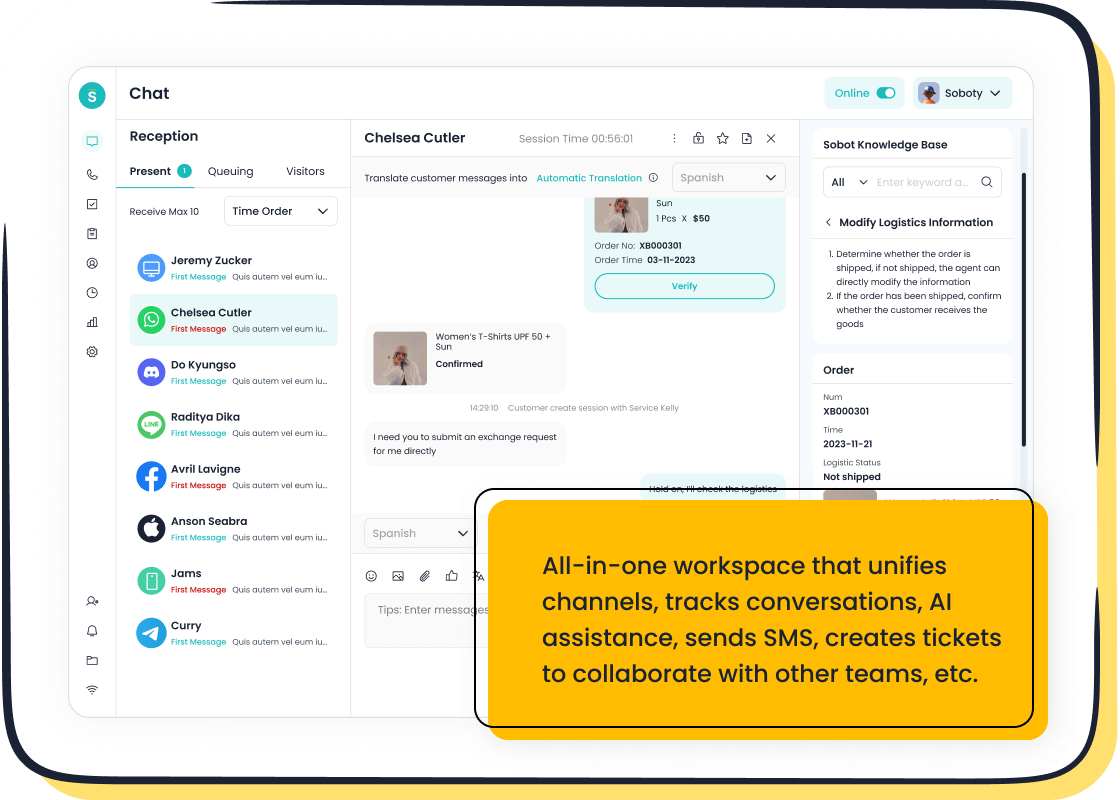
You now face a landscape where the difference between clients and customers shapes every business interaction. Imagine running an online store in 2025. You use Sobot AI to handle hundreds of customer questions each day. Over 77% of ecommerce professionals now rely on AI and automation. Digital tools help you serve customers who expect instant replies and personalized offers. Studies show that 64% of customers value 24/7 chatbot service, while 86% still want human support. You need to understand these new rules because digital transformation, like Sobot’s unified contact solution, drives real results and helps you keep up with rapid change.
Difference Between Clients and Customers
New Definitions in 2025
You see the difference between clients and customers everywhere in 2025. The words may sound similar, but they mean very different things for your business. In the past, you might have used these terms interchangeably. Now, you need to know the difference between clients and customers to succeed.
A client is someone who builds a long-term relationship with your business. You work together over time. You offer them personalized service, regular updates, and special attention. For example, in finance, a client might have a dedicated advisor who helps them plan for years. In retail, a client could be a VIP shopper who gets early access to new products and personal recommendations.
A customer is someone who makes a one-time purchase or interacts with your business for a short period. They want quick answers and fast service. In ecommerce, a customer might buy a product once and never return. In gaming, a customer could be someone who downloads a game and plays it for a few days.
Surveys show that 71% of people expect personalized interactions, and 76% feel frustrated when they do not get them. This shows why you must understand the difference between clients and customers. Companies that focus on clients and build trust see up to 60% higher profits than those who only focus on quick sales.
Here is a simple table to help you see the differences between a client and a customer:
| Aspect | Client | Customer |
|---|---|---|
| Relationship Length | Long-term, ongoing | Short-term, often one-time |
| Service Approach | Personalized, dedicated support | Standardized, self-service |
| Communication Style | Regular, proactive, tailored | Multi-channel, reactive, automated |
| Value to Business | High lifetime value, loyalty | Immediate revenue, less loyalty |
| Example Industry Use | Financial advisor, VIP retail shopper | Online buyer, walk-in store visitor |
You can see that the difference between clients and customers affects every part of your business. Sobot helps you manage both groups by offering tools like Live Chat and AI-powered support. These tools let you give clients the personal touch they expect and help customers get fast answers.
Key Business Impacts
You need to adjust your business strategies based on the difference between clients and customers. In retail, finance, and ecommerce, these new definitions change how you market, sell, and support.
Marketing teams now use data and analytics to spot who is a client and who is a customer. You can use tools like Sobot’s analytics to track Net Promoter Score (NPS), Customer Lifetime Value (CLV), and renewal rates. These metrics help you see which people need long-term care and which want quick service.
Companies that use client-focused strategies see 64% higher profits. They also keep more loyal users. Loyalty programs and proactive communication help you turn customers into clients. For example, Michael Kors used Sobot’s unified contact center to reduce response times by 83% and raise customer satisfaction to 95%. This shows how technology can help you manage both clients and customers better.
In ecommerce, you see companies like Amazon lead the way. Their customer-centric approach, fast delivery, and personalized offers set new standards. They use technology to meet the needs of both clients and customers. In retail, brands use programmatic ads to target shoppers and increase store visits. For example, Guess Parfums ran a campaign that brought 15,000 customers into stores.
You need to use CRM platforms and AI solutions to keep up. Sobot’s Live Chat and AI tools help you track every interaction, offer personalized service, and automate routine tasks. This lets you focus on building strong client relationships while still serving customers quickly.
Tip: Use surveys and feedback tools to learn what your clients and customers want. Good survey design helps you collect reliable data and improve your service.
The difference between clients and customers shapes your marketing, sales, and support. When you understand these differences, you can use technology like Sobot to grow your business and keep both groups happy.
Customer Experience Evolution
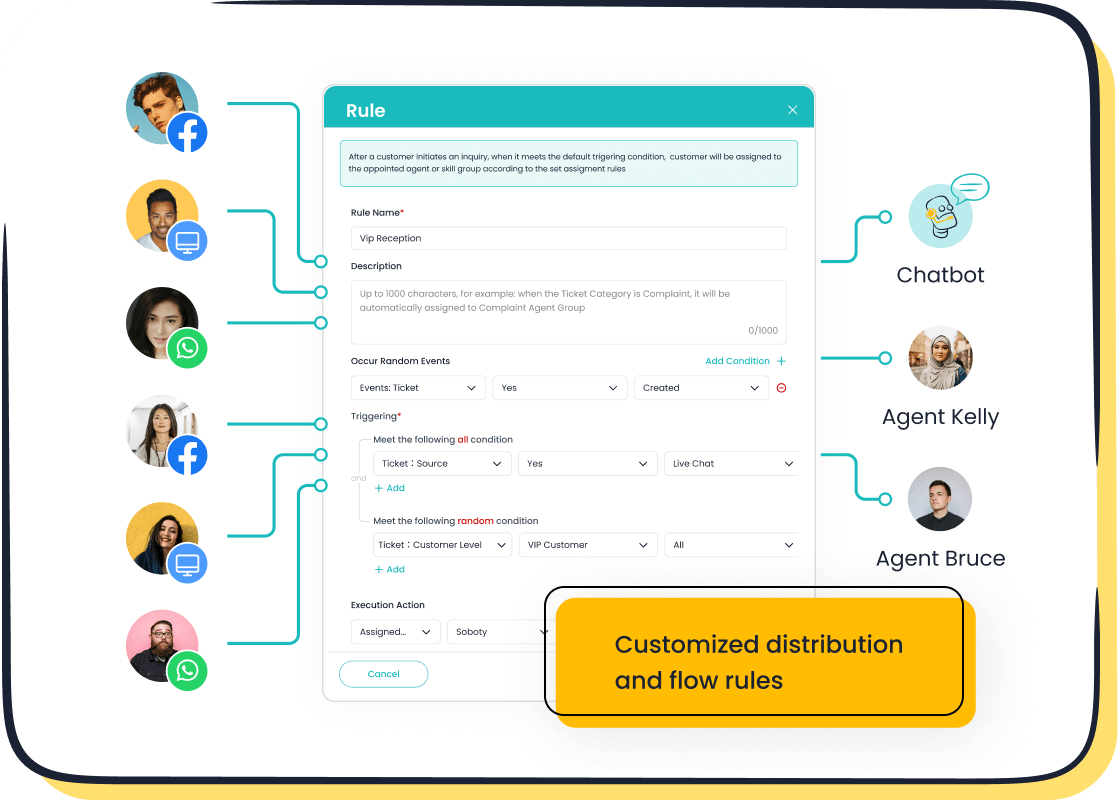
Personalization and Omnichannel
You live in a world where customer experience shapes every business decision. Today, you expect brands to know your preferences and respond on your favorite channels. Companies use omnichannel strategies to connect digital platforms, stores, and marketing. This creates a smooth journey for every customer. For example, banks let you start a loan online and finish it in a branch without repeating your information. Brands like Nike and Sephora use these methods to boost engagement and loyalty.
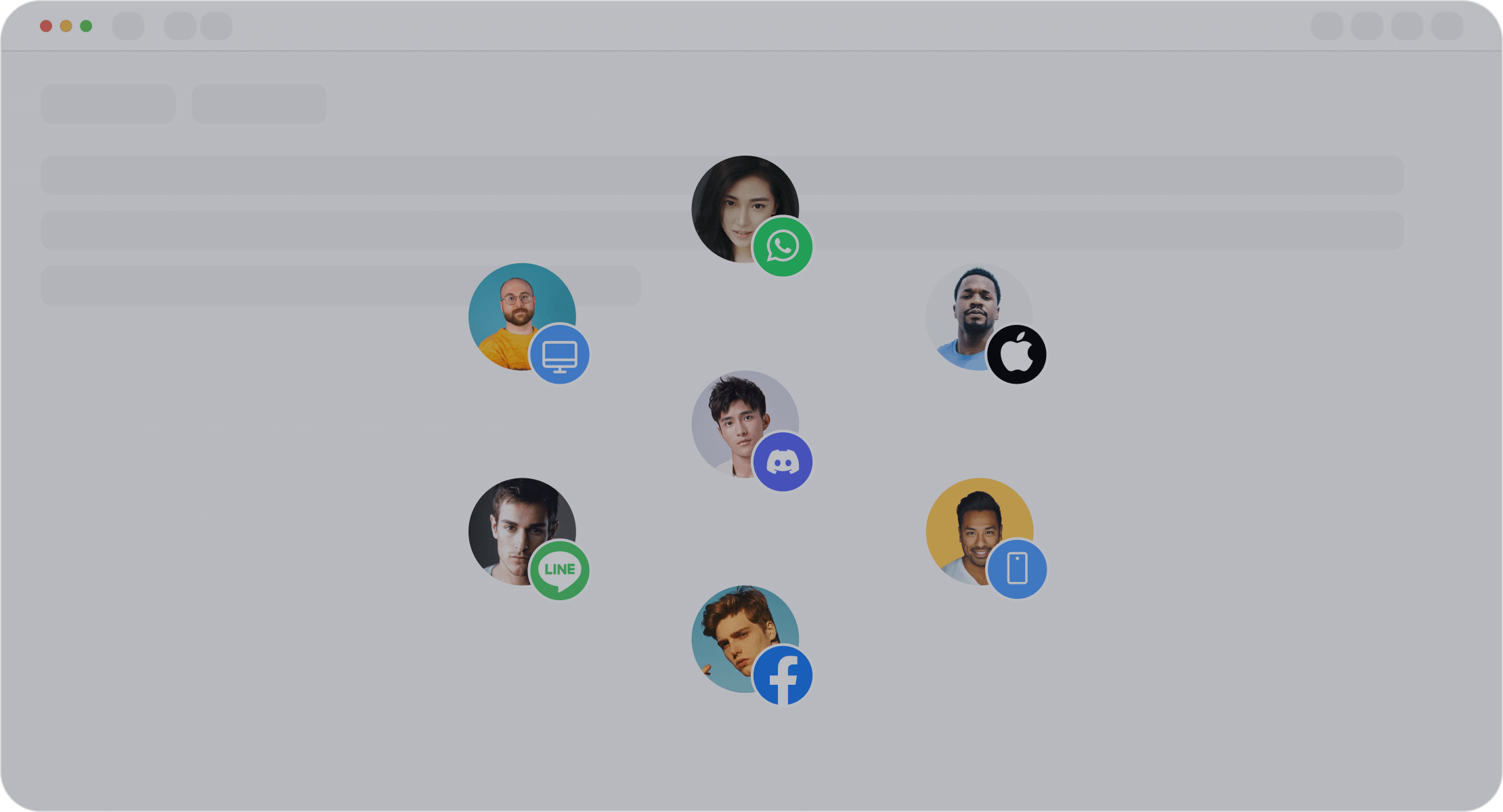
Sobot Live Chat helps you deliver this level of customer experience. You can chat with customers on websites, apps, or social media, all from one place. This unified approach means you never miss a message. You can also use customer data to send personalized offers and support. Studies show that 80% of customers say a seamless digital experience matters as much as the product itself. Companies using personalization see 40% more revenue and higher satisfaction.
Tip: Map your customer touchpoints and use tools like Sobot to keep every interaction connected.
Here is a table showing how customer experience evolves with omnichannel and personalization:
| Strategy | Benefit | Example/Stat |
|---|---|---|
| Omnichannel | Seamless journey across channels | 80% value seamless digital experience |
| Personalization | Higher revenue and loyalty | 40% more revenue |
| Unified Data | Better segmentation and offers | Improved customer satisfaction |
AI and Automation Trends
AI and automation now drive the next wave of customer experience. You see chatbots answering questions day and night. Sobot AI lets you automate replies, track issues, and even predict what a customer needs next. This frees your team to focus on complex problems and build real relationships.
Michael Kors used Sobot’s platform to unify all customer channels. They reduced response times by 83% and reached a 95% satisfaction rate. This shows how AI and automation can transform your service.
Research shows that 72% of regular chatbot users report better quality and less frustration. Companies using big data and AI see major gains in customer experience. In 2025, voice commerce sales are expected to hit $40 billion. You can see the growth in this chart:
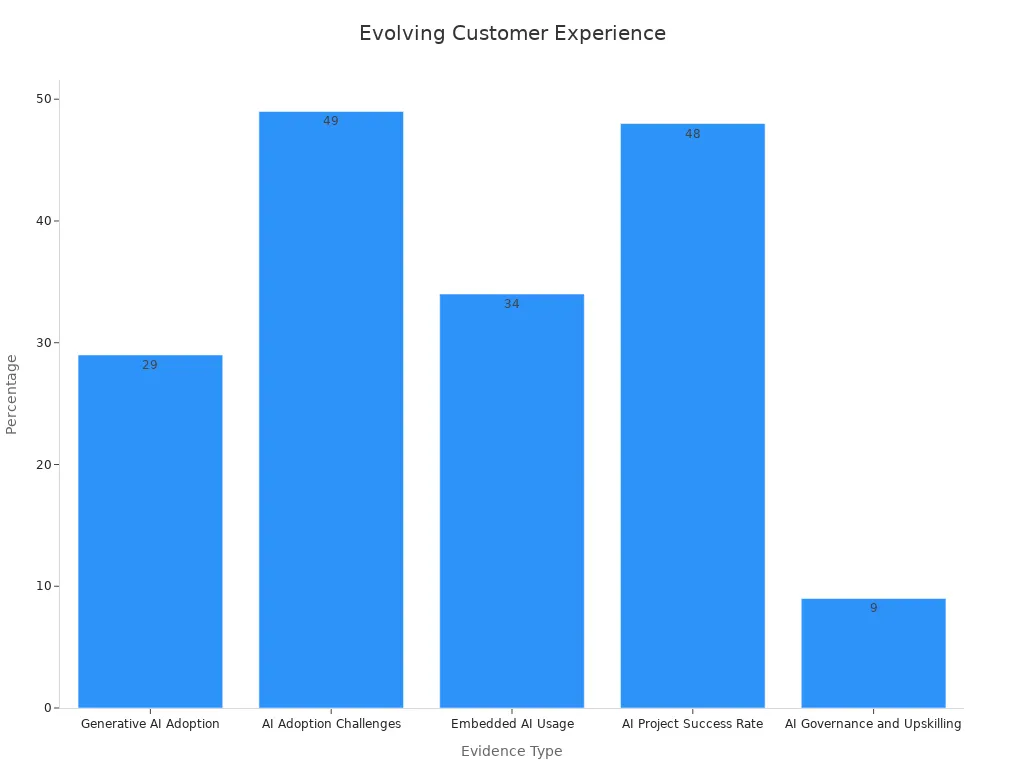
You need a customer-centric mindset to keep up. Sobot’s AI and Live Chat help you meet new expectations and deliver the best customer experience possible.
Relationship Management in 2025
Long-Term Clients vs. One-Time Customers
You need to manage both long-term clients and one-time customers in 2025. A client expects a deeper relationship. You focus on developing a partnership and nurturing a connection that lasts. This means you offer special services, regular updates, and personal attention. A one-time customer looks for quick answers and fast service. You help them solve a problem or make a purchase, but they may not return.
Sobot’s unified contact center helps you handle both groups. You can track every client interaction and see the full history in one place. This makes it easier to improve the overall client experience. You also use analytics to spot trends and measure client success. When you know what each client needs, you can build long-term connections and boost loyalty.
Tip: Treat every client as unique. Use data to personalize the client experience and show you care about their goals.
Retention and Engagement Strategies
You want to keep clients and customers coming back. Retention starts with understanding what each person values. Companies like Starbucks and Amazon use data analytics to personalize rewards and offers. This approach increases customer retention and loyalty. You can do the same by using Sobot’s analytics to segment your audience and adjust your strategies.
Here are practical steps for better retention:
- Use metrics like Net Promoter Score (NPS) and Customer Satisfaction Score (CSAT) to measure client success.
- Segment your clients and customers based on behavior and preferences.
- Launch loyalty programs or special offers for high-value clients.
- Respond quickly to feedback and solve problems fast.
The La Casita case shows how a loyalty program with a branded app led to strong customer adoption and engagement. Over 4,000 users submitted more than 3,800 receipts, showing the power of tailored engagement.
Sobot’s tools help you track retention rates and improve the client experience. You can see which strategies work best and adjust in real time. By focusing on client success and nurturing relationships, you build trust and grow your business.
Technology’s Role
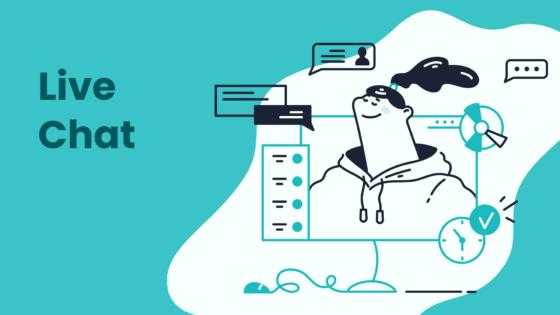
Omnichannel Communication
You see customers using many channels to connect with brands. They might start a chat on your website, send a message on WhatsApp, or visit your store. You need to keep every conversation connected. Sobot’s Live Chat and WhatsApp API help you do this. These tools let you talk to customers on websites, apps, and social media—all in one place. You never miss a message, and you always know what your customer needs.
Omnichannel communication gives you a big advantage. You deliver a consistent, personal experience at every step. Technical guides from companies like Segment show that omnichannel strategies help you unify customer data, map journeys, and use APIs for smooth messaging. This approach increases satisfaction, boosts engagement, and raises your return on investment. You reach people on their favorite channels and send messages that matter to them. You also collect better data, which helps you improve your service.
Tip: Use Sobot’s unified workspace to track every customer touchpoint. This helps you spot trends and deliver better support.
AI-Driven Support
AI changes how you deliver customer support. With Sobot AI, you can answer questions fast, predict what customers want, and solve problems before they grow. IBM reports that companies using AI in customer service see 17% higher satisfaction and 15% happier agents. AI tools give your team real-time suggestions and help them focus on complex issues.
You can use Sobot’s AI-powered chatbots to handle simple requests 24/7. These bots learn from each conversation and get smarter over time. They help you move from fixing problems to preventing them. AI also helps you understand customer feelings and spot patterns in behavior. This means you can act before issues happen, building trust and loyalty.
Note: Sobot’s analytics let you measure how well your AI tools work. You can see what customers like and where you can improve.
Adapting Your Business
Training and Team Alignment
You need a strong team to adapt your business in 2025. Training helps your team learn new skills and stay ready for change. Many companies use cloud-based learning systems so employees can learn anytime. For example, a tech company improved sales by 30% after updating its training with real-time feedback and interactive lessons. When you give your team training that fits their roles, you help everyone work together better. Team alignment means everyone understands the goals and works toward client success. Group projects and real-life scenarios in training help your team solve problems together. Companies that invest in ongoing learning see higher employee retention and better results. Over 75% of workers expect regular training to keep up with changes. Sobot offers resources and support to help you train your team and align everyone with your business goals.
Tip: Use Sobot’s knowledge base and analytics to spot skill gaps and track training progress.
Measuring Success
You need to measure your progress to know if your new strategies work. Start by setting clear goals for your team and your client relationships. Use key performance indicators (KPIs) like response time, customer satisfaction, and client retention. Benchmark your KPIs against industry standards to set realistic targets. Review your KPIs often to see what works and what needs improvement. Balance leading indicators, like new client sign-ups, with lagging indicators, like client success rates. Sobot’s analytics dashboard helps you track these numbers in real time. Companies that use data-driven measurement see better results, like higher customer engagement and more sales. For example, R3 Continuum increased inbound traffic by 150% using a data-driven approach. When you use a customer-centric mindset and measure your results, you can adjust quickly and keep your business growing.
- Set SMART goals for each client.
- Review KPIs monthly.
- Use Sobot’s free trial to test analytics and reporting tools.
- Update your strategies based on real-time feedback.
You now see that the difference between clients and customers shapes your strategy in 2025. Technology drives this change. AI, analytics, and cloud-based CRM systems help you deliver a better customer experience. The global CRM market could reach $82.7 billion by 2025 (source). You need to use tools like Sobot to personalize every customer experience and build strong customer relationships. As technology evolves, you will keep finding new ways to improve customer experience and grow your business.
FAQ
What is the main difference between a client and a customer in 2025?
You see a client as someone who builds a long-term relationship with your business. A customer usually makes a one-time purchase. This difference shapes your marketing, sales, and support strategies.
How does Sobot help improve customer experience?
Sobot gives you tools like Live Chat and AI-powered support. You can connect with customers on websites, apps, and social media. Sobot’s analytics help you track every interaction and improve your service.
Why is omnichannel communication important for clients and customers?
Omnichannel communication lets you reach clients and customers on their favorite channels. You keep every conversation connected. Studies show that 80% of customers value a seamless digital experience (source).
How can you measure success with Sobot’s solutions?
You use Sobot’s analytics dashboard to track key performance indicators like response time, customer satisfaction, and retention rates. These numbers help you see what works and where you can improve.
What are some real-world results from using Sobot?
Michael Kors used Sobot’s unified contact center to reduce response times by 83% and raise customer satisfaction to 95%. This shows how Sobot helps you manage both clients and customers better.
See Also
Discover The Leading Cloud Contact Centers For 2025
Comprehensive Guide To Quality Management Systems In Call Centers
Effective Best Practices For Managing Call Center Quality